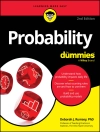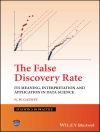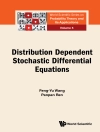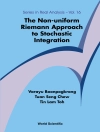Partial Least Squares is a family of regression based methods designed for the an- ysis of high dimensional data in a low-structure environment. Its origin lies in the sixties, seventies and eighties of the previous century, when Herman O. A. Wold vigorously pursued the creation and construction of models and methods for the social sciences, where “soft models and soft data” were the rule rather than the exception, and where approaches strongly oriented at prediction would be of great value. Theauthorwasfortunatetowitnessthedevelopment rsthandforafewyears. Herman Wold suggested (in 1977) to write a Ph D-thesis on LISREL versus PLS in the context of latent variable models, more speci cally of “the basic design”. I was invited to his research team at the Wharton School, Philadelphia, in the fall of 1977. Herman Wold also honoured me by serving on my Ph D-committee as a distinguished and decisive member. The thesis was nished in 1981. While I moved into another direction (speci cation, estimation and statistical inference in the c- text of model uncertainty) PLS sprouted very fruitfully in many directions, not only as regards theoretical extensions and innovations (multilevel, nonlinear extensions et cetera) but also as regards applications, notably in chemometrics, marketing, and political sciences. The PLS regression oriented methodology became part of main stream statistical analysis, as can be gathered from references and discussions in important books and journals. See e. g. Hastie et al. (2001), or Stone and Brooks (1990), Frank and Friedman (1993), Tenenhauset al. (2005), there are manyothers.
Spis treści
Editorial: Perspectives on Partial Least Squares.- METHODS.- Latent Variables and Indices: Herman Wold#x2019;s Basic Design and Partial Least Squares.- PLS Path Modeling: From Foundations to Recent Developments and Open Issues for Model Assessment and Improvement.- Bootstrap Cross-Validation Indices for PLS Path Model Assessment.- A Bridge Between PLS Path Modeling and Multi-Block Data Analysis.- Use of ULS-SEM and PLS-SEM to Measure a Group Effect in a Regression Model Relating Two Blocks of Binary Variables.- A New Multiblock PLS Based Method to Estimate Causal Models: Application to the Post-Consumption Behavior in Tourism.- An Introduction to a Permutation Based Procedure for Multi-Group PLS Analysis: Results of Tests of Differences on Simulated Data and a Cross Cultural Analysis of the Sourcing of Information System Services Between Germany and the USA.- Finite Mixture Partial Least Squares Analysis: Methodology and Numerical Examples.- Prediction Oriented Classification in PLS Path Modeling.- Conjoint Use of Variables Clustering and PLS Structural Equations Modeling.- Design of PLS-Based Satisfaction Studies.- A Case Study of a Customer Satisfaction Problem: Bootstrap and Imputation Techniques.- Comparison of Likelihood and PLS Estimators for Structural Equation Modeling: A Simulation with Customer Satisfaction Data.- Modeling Customer Satisfaction: A Comparative Performance Evaluation of Covariance Structure Analysis Versus Partial Least Squares.- PLS in Data Mining and Data Integration.- Three-Block Data Modeling by Endo- and Exo-LPLS Regression.- Regression Modelling Analysis on Compositional Data.- APPLICATIONS TO MARKETING AND RELATED AREAS.- PLS and Success Factor Studies in Marketing.- Applying Maximum Likelihood and PLS on Different Sample Sizes: Studieson SERVQUAL Model and Employee Behavior Model.- A PLS Model to Study Brand Preference: An Application to the Mobile Phone Market.- An Application of PLS in Multi-Group Analysis: The Need for Differentiated Corporate-Level Marketing in the Mobile Communications Industry.- Modeling the Impact of Corporate Reputation on Customer Satisfaction and Loyalty Using Partial Least Squares.- Reframing Customer Value in a Service-Based Paradigm: An Evaluation of a Formative Measure in a Multi-industry, Cross-cultural Context.- Analyzing Factorial Data Using PLS: Application in an Online Complaining Context.- Application of PLS in Marketing: Content Strategies on the Internet.- Use of Partial Least Squares (PLS) in TQM Research: TQM Practices and Business Performance in SMEs.- Using PLS to Investigate Interaction Effects Between Higher Order Branding Constructs.- TUTORIALS.- How to Write Up and Report PLS Analyses.- Evaluation of Structural Equation Models Using the Partial Least Squares (PLS) Approach.- Testing Moderating Effects in PLS Path Models: An Illustration of Available Procedures.- A Comparison of Current PLS Path Modeling Software: Features, Ease-of-Use, and Performance.- to SIMCA-P and Its Application.- Interpretation of the Preferences of Automotive Customers Applied to Air Conditioning Supports by Combining GPA and PLS Regression.












